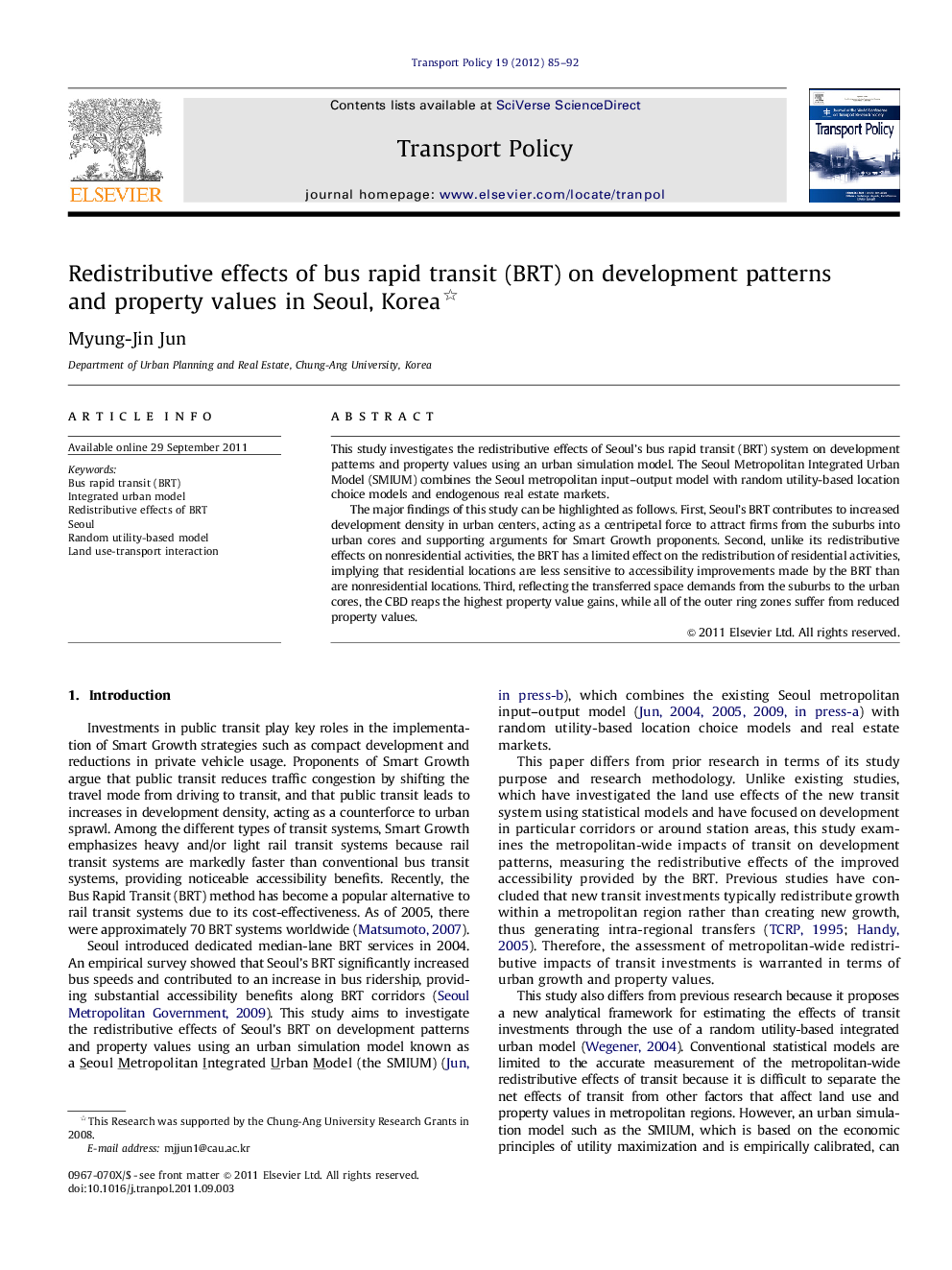| کد مقاله | کد نشریه | سال انتشار | مقاله انگلیسی | نسخه تمام متن |
|---|---|---|---|---|
| 1065152 | 948539 | 2012 | 8 صفحه PDF | دانلود رایگان |

This study investigates the redistributive effects of Seoul's bus rapid transit (BRT) system on development patterns and property values using an urban simulation model. The Seoul Metropolitan Integrated Urban Model (SMIUM) combines the Seoul metropolitan input–output model with random utility-based location choice models and endogenous real estate markets.The major findings of this study can be highlighted as follows. First, Seoul's BRT contributes to increased development density in urban centers, acting as a centripetal force to attract firms from the suburbs into urban cores and supporting arguments for Smart Growth proponents. Second, unlike its redistributive effects on nonresidential activities, the BRT has a limited effect on the redistribution of residential activities, implying that residential locations are less sensitive to accessibility improvements made by the BRT than are nonresidential locations. Third, reflecting the transferred space demands from the suburbs to the urban cores, the CBD reaps the highest property value gains, while all of the outer ring zones suffer from reduced property values.
► Seoul's BRT contributes to increased development density in the urban centers.
► Residential locations are less sensitive to accessibility improvements made by the BRT.
► The CBD reaps the highest property value gains.
Journal: Transport Policy - Volume 19, Issue 1, January 2012, Pages 85–92